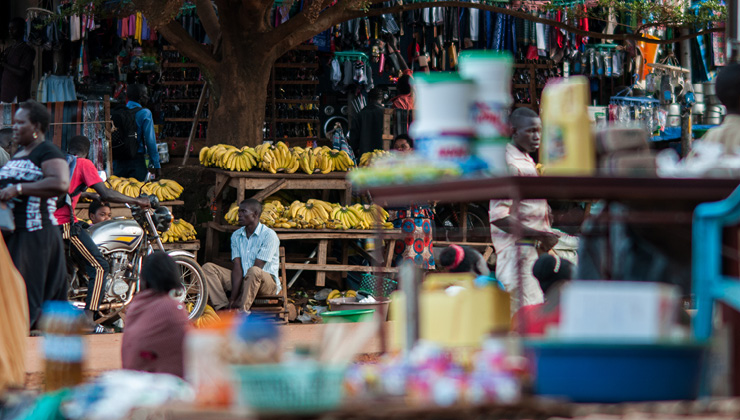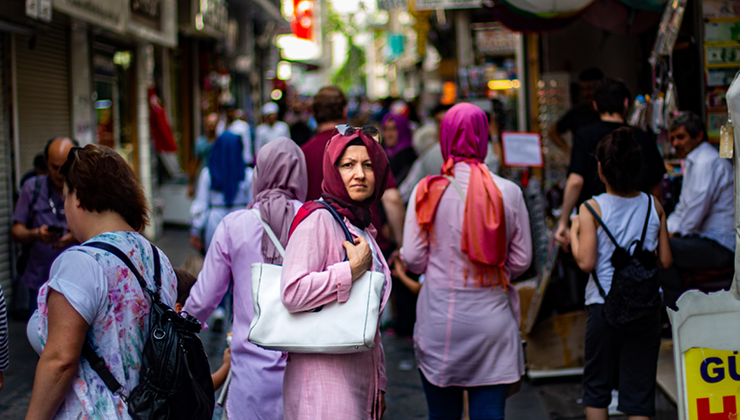A survivor-centred, rights-based approach to conflict-related violence must be intersectional. Elena B. Stavrevska argues here why we must acknowledge victims/survivors whose voices are not always present and address the intersecting structures that lead to violence if we are to really be transformative in our responding to conflict-related sexual violence.
In April 2019, United Nations Security Council Resolution 2467 introduced explicitly the concept of a “survivor-centred approach” to the Women, Peace and Security (WPS) agenda. The preamble of the resolution recognises the need for, and operative paragraph 16 encourages member states, to adopt “a survivor-centred approach in preventing and responding to sexual violence in conflict and post-conflict situations, ensuring that prevention and response are non-discriminatory and specific, and respect the rights and prioritise needs of survivors, including groups that are particularly vulnerable or may be specifically targeted (…)” This resolution makes several hopeful openings, including clear reference to states’ international legal obligations to provide remedies for violations of human rights, including access to justice and reparations.
Even though the notion existed before, the adoption of 2467, the work of the Special Representative of the Secretary-General on Sexual Violence in Conflict, Pramila Patten, together with civil society organisations and the 2018 Nobel Peace Prize laureates, Denis Mukwege and Nadia Murad, have centred the need for a survivor-centred approach and relatedly, access to justice and reparations for conflict-related sexual violence (CRSV), in numerous policy discussions. While this critical issue is in the spotlight, it is also important to highlight the intersectional considerations that have to be built into any survivor-centred approach in responding to CRSV.
Intersectionality as a heuristic device
While the origin of intersectionality has been a matter of contention and its history cannot be neatly organised, its roots can be found in the work of black, post-colonial, indigenous, Chicana, Latina, queer, and feminist activists and scholars. From Sojourner Truth’s “Ain’t I a Woman?” and Gloria Evangelina Anzaldúa’s Borderlands/La Frontera: The New Mestiza to the Combahee River Collective statement and bell hook’s Ain’t I a Woman?: Black Women and Feminism, to name but a few, they have all argued that the experiences of women of colour differ from those of white women, as well as those of men of colour. They also differ from the combination of those two types of experiences and are informed by the interlocking of gender and race. Analysing that position from a legal perspective is precisely the argument that Kimberlé Crenshaw made when she first used the term in 1989.
Crenshaw distinguishes between structural and political intersectionality. The former refers to the effect of intersecting social structures such as gender, ethnicity, race, religion, sexuality, age and so on, have on a person’s experience. In other words, a person’s position in society is not determined by gender, race, class or age separately, but the unique combination of all of them.
The latter refers to the exclusion or marginalisation of interests of some subgroups by activists, organisations and/or political movements working towards justice for different groups, thereby reinforcing another form of injustice. Crenshaw has specifically discussed the marginalisation of the interests of women of colour by feminist and antiracist movements in the United States.
Each of the two types of intersectionality sheds light on different, yet critical aspects that need to be taken into consideration when developing an inclusive survivor-centred approach to access to justice and reparations.
Political intersectionality and survivors
A survivor-centred approach so far has entailed amplifying the voices of survivors, providing a platform for them, acknowledging their agency, and, in certain cases, taking into account their experiences when developing remedies. With women and girls being recognised through the WPS agenda as disproportionally affected by CRSV, this approach to political intersectionality reveals at least two risks.
The first is that voice gets equated to having agency, which creates the risk of forgetting, invisibilising and further marginalising the interests of those who do not speak out for a variety of reasons. Not only can silences be political and agential in challenging power relations, protecting oneself or coping with difficulties, but they can also be deeply gendered and intersectional, considering existing norms of who is allowed to speak, who is heard, and whose silences matter.
Whose voices/silences get recognised as survivors’ relates to the second risk. Thus far in CRSV policy and discourse there has generally been a binary understanding of men as perpetrators and women as victims/survivors. There has additionally been a narrow understanding of what constitutes violence, including sexual violence, equating it to acts of violence perpetrated by national combatants against national populations during the conflict itself. This has notably excluded violence within refugee camps, as well as any act of violence by foreign peacekeepers, whose presence is conflict-related but whose violence is not considered so. In that sense, such a narrow understanding of CRSV is not only gendered, but also colonial and racial. Furthermore, it also excludes people who do not fit a binary understanding of sex and gender, such as trans and non-binary people, as well as those who do not neatly fall in a combatant – civilian dichotomy, such as combatants who have been subject to CRSV.
Not only can silences be political and agential in challenging power relations, protecting oneself or coping with difficulties, but they can also be deeply gendered and intersectional, considering existing norms of who is allowed to speak, who is heard, and whose silences matter
This narrowing of who is included, whether physically, policy-wise, or even agency-wise, risks narrating a single truth that suppresses alternative and subordinate narratives and contributes to political intersectionality. The problem with such a single-category understanding of the past and the present is that it leads to single-category solutions and visions for the future. An intersectional survivor-centred approach, in contrast, requires a broadening in terms of discourse and policy solutions.
Politically it remains important to emphasise the impact that CRSV has on women and girls. At the same time, an intersectional approach means using and producing a more nuanced understanding of different forms of violence and establishing a historical record that reflects the experiences of different groups impacted by conflict-related violence. It also means acknowledging truths that are not represented at the table and challenging the assumption of homogeneity of victims/survivors.
The problem with such a single-category understanding of the past and the present is that it leads to single-category solutions and visions for the future. An intersectional survivor-centred approach, in contrast, requires a broadening in terms of discourse and policy solutions
This, in turn, allows for a more holistic understanding of conflict-related forms of violence, including when, where, and how it happens. It can also help link violence to its causes and structural intersectionality in order to create a foundation for remedies, including access to justice and reparations, and future violence prevention.
Structural intersectionality and survivors
Earlier this year, Special Representative Patten noted that survivors are not a homogenous group. They include:
This is a vital reminder not only of survivors’ agency, but also of the structures within which they exist that has so far not been reflected in policy or legal solutions. Any remedies could further marginalise some survivors if structural intersectionality is not taken into consideration.
What this means in practice is to recognise that violence, including CRSV, is both a cause and a consequence of inequality, not only on the basis of gender, but also of race, ethnicity, religion, class, sexuality, age, ability status, citizenship, nationality and others. If conflict-related violence is to be addressed, remedied and prevented, as the WPS resolutions foresee, the proposed mechanisms should not be merely restorative, which would mean a return to the status quo and the previously existing inequalities. A return to the status quo cannot guarantee non-repetition of the violence. Instead, any mechanism must be transformative in nature, addressing not only the effects of the violence, but also transforming the intersecting structures that have given rise to the violence in the first place.
This means embracing a more holistic and intersectional approach that moves beyond a homogenous view that categorises the harm and the victims/survivors only by types of violations. It also means recognising the individuality of needs of survivors and their communities, given the disruption in their life projects that the violence has caused.
Conclusion
A survivor-centred, rights-based approach to conflict-related violence has immense potential to positively contribute to the building of a more equal and just peace. For that, however, anything short of an intersectional approach might contribute to marginalisation of interests and people that have already been rendered invisible. Such an approach does not detract from the centring of violence against women. Instead, it enriches it both by recognising that “[t]here is no such thing as a single-issue struggle because we do not live single-issue lives” and by paying closer attention to the structural inequalities that make the (re)emergence of violence possible. While a survivor-centred approach is welcome as these voices have often been side-lined in policy and legal debates, ensuring an intersectional approach is essential in righting the wrongs, moving beyond tokenism and co-optation, and envisioning just, decolonial, inclusive, and plural futures.
This blog was written with the support of a European Research Council (ERC) grant under the European Union’s Horizon 2020 research and innovation programme (Grant agreement No. 786494).
The views, thoughts and opinions expressed in this blog post are those of the author(s) only, and do not reflect LSE’s or those of the LSE Centre for Women, Peace and Security.





